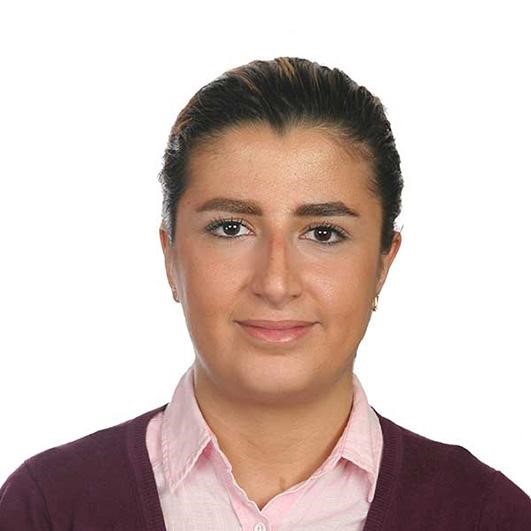AUCTORES
Globalize your Research
Research Article | DOI: https://doi.org/10.31579/2578-8868/351
1Neurosurgery Department – Thies Hospital Center - Thies, Senegal.
2Neurosurgery Department - Fann University Hospital Center - Dakar, Senegal.
3Neurosurgery Department – Ziguinchor Hospital Center - Ziguinchor, Senegal.
4Geriatric Department - Fann University Hospital Center - Dakar, Senegal.
*Corresponding Author: Yakhya Cisse, Neurosurgery Department – Thies Hospital Center - Thies, Senegal.
Citation: Yakhya Cisse, Diana Diop, Roger Ilunga Mulumba, Ndeye khady cabe Mbay and Daniel Locko, et.al, (2025), Chronic Subdural Hematomas of Thies Hospital Center: About 102 Cases, J. Neuroscience and Neurological Surgery, 17(3); DOI:10.31579/2578-8868/351
Copyright: ©, 2025, Yakhya Cisse. This is an open-access article distributed under the terms of The Creative Commons Attribution License, which permits unrestricted use, distribution, and reproduction in any medium, provided the original author and source are credited
Received: 23 January 2025 | Accepted: 14 February 2025 | Published: 03 March 2025
Keywords: hematoma; subdural; chronic; thies; elderly subjects
Introduction: The chronic subdural hematoma is a hematic collection built up over several weeks and located between the dura mater and the arachnoid. It is a common condition in geriatric patients, most often following a head injury, sometimes minimal that goes unnoticed. The objective of this study is to give the clinical, therapeutic and evolutionary aspects of chronic subdural hematomas in our department.
Patients and Methods: this is a retrospective, descriptive study of 102 cases of chronic subdural hematomas hospitalized in the Neurosurgery Department of the Regional Hospital of Thiès in Senegal over a period of 05 years from January 2016 to January 2021.
Results: A total of 102 cases of chronic subdural hematomas were identified. The mean age was 66 years with extremes of 25 and 91 years. The sex ratio was 4.6. A notion of minimal head trauma was found in 59% of cases. The use of salicylates was found in 12% of cases and 05% of patients were on anticoagulant treatment. Motor deficit was the main telltale sign (79.41% of cases), followed by headache in 35.29% of cases. Subdural hematoma was bilateral in 23 (22.54%) of patients and unilateral in 79 (77.45%) of patients with a predominance of the left side in 51 (50%) cases. Five of our patients benefited from exclusive medical treatment with a good evolution Among the 95 patients operated, 82% of the patients were operated on under general anesthesia and only 18% under local anesthesia. The drill hole technique was the most commonly used, i.e. 96% of the patients operated on except for 4 patients who had a cranial flap. The short- and medium-term evolution was favorable in 75% of patients with a complete recovery in 80.39%. The mortality rate in our study was 9%. Ten (10) patients had sequelae after surgical treatment.
Conclusion: Chronic subdural hematoma is a common pathology in the elderly. Its prognosis is good if diagnosed and treated early
Chronic subdural hematoma (CSH) is a serosanguineous collection of aged clots located in the subdural space (space between the inner layer of the dura mater and the arachnoid) (1). It is a geriatric pathology that is common with a clear male predominance. CSH manifests itself after a free interval that varies from a few weeks to several months (2) Its pathophysiology remains controversial and its polymorphous clinical symptomatology often poses a problem of diagnostic orientation, hence Computed tomography is the key examination for diagnosis, whose sensitivity exceeds 90% (3). Three types of technique are generally used: craniotomy drill twist, the drill hole with drainage and the classic craniectomy. This surgical treatment is often combined with medical treatment consisting of hydroelectrolyte rehydration, corticosteroid therapy combined with atorvastatin(4–6).
This is a retrospective study conducted over a period of 05 years: from January 2016 to January 2021 and having focused on 102 patient files with a chronic subdural hematoma whose diagnosis was confirmed by a brain CT-scan or brain MRI and treated at the neurosurgery department of Thiès during this period. Cases of acute extradural, intracerebral and subdural hematomas have not been included in the present work.
A total of 102 patients were hospitalized for chronic subdural hematoma during our study period. The mean age of our study population was 66 years with extremes of 25 years and 91 years. The majority of our patients are between 66-75 years old, i.e. 29% of cases. A predominance of men was found, i.e. 82% of cases, with a sex ratio of 4.6. The notion of head trauma was found in 59% of cases, the use of salicylates was found in 12% of cases and 05% of patients were on anticoagulant treatment. Chronic alcohol admittedness was found in only 1 patient and age-related brain atrophy was found in 43.5% of cases. In our study, 90% of patients with a head injury specified the notion of free interval. The mean time to admission for our patients who reported a notion of head trauma was 41 days with extremes of 3 and 168 days. In most of our patients, i.e. 45% of cases, the free interval was between 2-4 weeks. From a clinical point of view, headache was the circumstance of discovery in 36 (35.29%) cases, isolated or associated with other signs such as vomiting forming an intracranial hypertension syndrome. This syndrome of ICHS was present in 69% of cases. Motor deficit was found in 81 (79.41%) cases, comitial seizures were found in 8% of cases and language disorders were present in 23% of cases. Neuropsychological disorders were found in 11% of cases with 6 cases of incoherent speech and irritability; 3 cases of mental confusion and 2 cases of psychomotor agitation. All our patients had benefited from a brain CT scan as a first-line diagnostic method highlighting a crescent lunar lesion with concavity inside and convexity outside, pericerebral exerting or not a mass effect on the ventricles and medial structures. Subdural hematoma was bilateral in 23 (22.54%) of patients and unilateral in 79 (77.45%) of patients with a predominance of the left side in 51 (50%) cases. The hematoma was hemispherical in 90 (88.23%), frontoparietal patients in 08 (7.84%) patients and temporoparietal in 4 (3.92%) patients. The subdural hematoma was hypodense in 40.2% of cases, isodense in 19.6% of cases and of different age in 20.58% of cases. The associated lesions were sub-falcorial engagement in 59 (57.84%) patients and internal temporal involvement was present in 2 (1.9%) patients. Only one of our patients had a brain MRI scan, which confirmed his diagnosis.
Therapeutically, exclusive medical treatment was initiated in 5 (4.9%) patients based on clinical and radiological evaluation. It was based on oral corticosteroid therapy and atorvastatin. In our series, 97 (95.09%) patients had undergone surgical treatment. This treatment consisted of making one or two trepanation holes depending on the indication, an evacuation of the hematoma followed by abundant washing with warm saline serum until lightening and then placing a subcutaneous drain in siphoning for drainage not exceeding 72 hours. We made one drill hole for unilateral CSH in 63 patients and two holes in 7 patients. For bilateral CSHs, we made 2 holes in 10 patients and in 13 patients, a hole made on the predominant side of the bilateral hematoma. Craniectomy-membranectomy consists of performing a cranial flap then an opening of the dura mater followed by a resection of the outer membrane and partitions, then evacuation and abundant washing until lightening and drainage. It was performed in 4 of our patients who all had unilateral septate CSH. Our patients were operated on under two anesthesia techniques, either by local anesthesia 18%, or by general anesthesia 82% of the operated patients. The 5 patients who received exclusive medical treatment all had a good outcome. Regarding the patients who had surgery, the short- and medium-term evolution was favorable in 75%. We have identified 18 (17.64%) cases of complications. The evolution was marked by a recurrence in 11 (10.78%) of the cases: 8 patients had progressed well after a resumption of surgery, Among the 3 remaining patients we noted: 1 case of ipsilateral subdural empyema and an infection of the wall, 1 case of compressive pneumencephaly. The mean time from surgery to hematoma recurrence was 18 days with extremes of 3 and 48 days. We deplored a mortality rate of 9%. Sequelae were observed in 10 (9.8%) patients. There were 5 cases of isolated motor deficit, 1 case of isolated epilepsy, 1 case of isolated neuropsychological disorders, 2 cases of association of motor deficits and epilepsy and 1 case of association of neuropsychological disorders and epilepsy.
The annual incidence of chronic subdural hematoma varies greatly between authors and study populations, from 3.1 to 14.1 per 100,000 population (5.7). This figure clearly increases with age, especially after the age of 65 (4). Several authors (4,8) report certain factors associated with the appearance of chronic subdural hematoma such as:
- Head trauma due to falls.
- Age-related brain atrophy.
- Anticoagulant and antiplatelet treatments.
- Hemostasis abnormalities.
- Chronic alcoholism
The same observation was made in our study. In our series, the mean age was 66 years, with extremes of 25 and 91 years, and patients aged at least 65 years made up 53.5% of our study population. Our results are comparable to those reported in the literature (4,5,9). This shows that DCS is mainly a geriatric pathology. This age-related distribution of DCSH is very probably explained by the process of cerebral atrophy that sets in from the age of fifty onwards and the fragility of the vessels, which favours the formation of haematomas. We noted a male predominance of 82% with a sex ratio of 4.6, which is classic in the literature. This large male predominance has been found in other African studies (4,5,10,11). This male predominance is probably linked to the greater exposure of men to occupational and social risks that lead to cranial trauma, to pathologies requiring anticoagulant treatment and to chronic alcoholism. According to Alliez(12) et al, oestrogens play a protective role in the formation of haematoma neo-membranes in women. Head injury, even though it is most often forgotten by the patient, was the most common risk factor in our series (59% of patients), followed by the use of salicylates and anticoagulants. This finding is shared by other authors such as (4,5,11). The average admission time for our patients reporting head trauma was 41 days, with extremes of 3 and 168 days, which is in line with the classic time required for neo-membrane formation. The free interval correlates with the patient's age. The latency period is shorter in younger patients and longer in older patients (4). This could be explained by the fact that the cerebral atrophy characteristic of elderly subjects allows the haematoma to develop over a longer period, before it becomes symptomatic. In our series, headache was the reason for discovery in 36 (35.29%) patients and 69% of patients presented with a complete ICHS syndrome. Agaly (4), Sakho (11) and Riyad (1) found a higher frequency of patients presenting with headache, respectively 41.5%, 39.1% and 63.40%. The lower frequency of headache in our series could be explained by the advanced age of our study population. In fact, headaches are more frequently found in series from younger populations because their existence is due to the increase in intracranial pressure which, in turn, results from the conflict between the haematoma and the cerebral parenchyma. In elderly subjects, the rarity of ICHS may be explained by cerebral atrophy, which leaves more space for the haematoma. The motor deficit as a whole is the sign most frequently found on examination, and its onset is insidious, gradually worsening until it becomes a reason for consultation (4). Motor deficit was found in 79.41% of cases. This corroborates the findings of Sakho (11) and Dongmo (13). This high frequency of hemiplegia could be linked to the delay in diagnosis. In our series, neuropsychological disorders were present in 11% of cases. Ekouéle(9) found psychotic forms in 12% of cases, Benmoussa(2) in 17.6%. The series by Maiga(14) included 26 cases of CSH, all of which were revealed by psychiatric disorders. In 2004, Gelabert G (15) reported that behavioural disorders were statistically more common in elderly subjects, with figures of 33.8% in subjects aged over 70 compared with 21.7% in those under 70. Today, as life expectancy increases, we are seeing more and more psychotic manifestations of CSH in elderly subjects. Vigilance disorders and epilepsy are less indicative of DCS, with 11.3% and 3.8% respectively, as in our series(4). Cerebral CT scans performed in all our patients revealed unilateral DCS in 77.45% of cases, with a predominant location in the left hemisphere (50%). Our results are in line with those of Benmoussa (2) and Dongmo (13). Five (5) of our patients had received exclusive medical treatment. Of these five patients, four had received corticosteroid therapy. ecaux (16) reported two cases of chronic subdural haematomas with a favourable outcome on corticosteroids. Diallo (17) in a series of CSH in elderly subjects treated with corticosteroids: 66.67% of patients had a favourable outcome compared with 10.53% who failed treatment; he specified that advanced age, a large volume of haematoma and significant deviation of the midline are contraindications to exclusive corticosteroid treatment. Only one patient was treated exclusively with atorvastatin. Jiang (18) showed in a study in China that for 98 patients suffering from chronic subdural haematoma with conservative treatment based on atorvastatin, 45 (45.9%) had a good evolution of their neurological signs. Mohameth Faye (6), in his series, also appears to recommend statins as an alternative medical treatment for CSHD in patients with co-morbidities that relatively contraindicate surgery. These recent studies suggest that atorvastatin reduces haematoma and improves patients' clinical condition. Ninety-seven of our patients had undergone surgery, i.e. 95.09% of all patients in the series. CSH is primarily treated surgically. Classically, the principle is to evacuate the subdural haematic collection and abundantly rinse the cavity to expel the anticoagulant and fibrinolytic contents, in order to ensure cerebral decompression and allow a return to normal local haemostasis (10). Our patients underwent two types of anaesthesia: local anaesthesia (LA) in 18% and general anaesthesia (GA) in 82% of patients. Bankole (19) had 96% of patients operated on under GA, while Djientcheu (20) preferred local anaesthesia to general anaesthesia because of its tolerance by elderly and frail subjects. The choice of anaesthetic depends on the surgeon's habits, but also on the type of surgery performed. The trepan hole was the most commonly used surgical technique in our series, accounting for 93.81% of patients operated on. In our study, 85% of patients with unilateral CSH underwent surgery using a single hole, compared with 10% who underwent surgery using two trepan holes. For bilateral haematomas, 13 patients (55%) underwent surgery with one trepan hole on the predominant side of the bilateral haematoma, compared with 10 patients (45%) with two trepan holes. In the series by Agaly (4), one trepan hole was performed in 17 patients (34.4%) with unilateral CSH and two trepan holes in 49% of patients with unilateral CSH. According to mwanyombet(10) surgery consisted mainly of two trepan holes-88 (86%) or sometimes a standard craniotomy for the removal of thick false membranes and/or compartmentalization of the CSH seen on CT-scan. The short- and medium-term outcome of our operated patients was favourable in 75%. Other studies (14,19) have also reported good results. Recurrence was found in 11% of patients in our series. Agaly(4) in a study of 53 patients had a recurrence rate of 5.9% in patients operated on with one hole and 4.5% in those operated on with two holes. K. Nayil (21) in a study of 254 patients, comparing the efficacy of surgical treatment by trepanation, noted that the recurrence rate was 6.15% in patients operated on with a single hole compared with 4.83
Chronic subdural haematoma is a common condition in the elderly. It is difficult to diagnose in the absence of a CT scan, due to its clinical polymorphism, especially in elderly patients, those suffering from alcoholism or those on anticoagulants. Treatment is primarily surgical. Early diagnosis and management improves prognosis, reducing mortality and morbidity. Long-term patient follow-up and social reintegration must be considered to limit the risk of recurrence.
CSH: chronic subdural hematoma
ICHS: intracranial hypertension syndrome
GA: general anaesthesia
LA: local anaesthesia
Ethics approval and consent to participate: Not applicable
Availability of data and material: All data generated or analysed during this study are included in this published article [and its supplementary information files].
Competing interests: The authors declare that they have no competing interests
Funding: The manuscript has not been financed.
Authors' contributions: All authors read and approved the final manuscript.
Acknowledgements: Sans objet
Authors' information (optional): Not applicable
Clearly Auctoresonline and particularly Psychology and Mental Health Care Journal is dedicated to improving health care services for individuals and populations. The editorial boards' ability to efficiently recognize and share the global importance of health literacy with a variety of stakeholders. Auctoresonline publishing platform can be used to facilitate of optimal client-based services and should be added to health care professionals' repertoire of evidence-based health care resources.

Journal of Clinical Cardiology and Cardiovascular Intervention The submission and review process was adequate. However I think that the publication total value should have been enlightened in early fases. Thank you for all.

Journal of Women Health Care and Issues By the present mail, I want to say thank to you and tour colleagues for facilitating my published article. Specially thank you for the peer review process, support from the editorial office. I appreciate positively the quality of your journal.
Journal of Clinical Research and Reports I would be very delighted to submit my testimonial regarding the reviewer board and the editorial office. The reviewer board were accurate and helpful regarding any modifications for my manuscript. And the editorial office were very helpful and supportive in contacting and monitoring with any update and offering help. It was my pleasure to contribute with your promising Journal and I am looking forward for more collaboration.

We would like to thank the Journal of Thoracic Disease and Cardiothoracic Surgery because of the services they provided us for our articles. The peer-review process was done in a very excellent time manner, and the opinions of the reviewers helped us to improve our manuscript further. The editorial office had an outstanding correspondence with us and guided us in many ways. During a hard time of the pandemic that is affecting every one of us tremendously, the editorial office helped us make everything easier for publishing scientific work. Hope for a more scientific relationship with your Journal.

The peer-review process which consisted high quality queries on the paper. I did answer six reviewers’ questions and comments before the paper was accepted. The support from the editorial office is excellent.

Journal of Neuroscience and Neurological Surgery. I had the experience of publishing a research article recently. The whole process was simple from submission to publication. The reviewers made specific and valuable recommendations and corrections that improved the quality of my publication. I strongly recommend this Journal.

Dr. Katarzyna Byczkowska My testimonial covering: "The peer review process is quick and effective. The support from the editorial office is very professional and friendly. Quality of the Clinical Cardiology and Cardiovascular Interventions is scientific and publishes ground-breaking research on cardiology that is useful for other professionals in the field.

Thank you most sincerely, with regard to the support you have given in relation to the reviewing process and the processing of my article entitled "Large Cell Neuroendocrine Carcinoma of The Prostate Gland: A Review and Update" for publication in your esteemed Journal, Journal of Cancer Research and Cellular Therapeutics". The editorial team has been very supportive.

Testimony of Journal of Clinical Otorhinolaryngology: work with your Reviews has been a educational and constructive experience. The editorial office were very helpful and supportive. It was a pleasure to contribute to your Journal.

Dr. Bernard Terkimbi Utoo, I am happy to publish my scientific work in Journal of Women Health Care and Issues (JWHCI). The manuscript submission was seamless and peer review process was top notch. I was amazed that 4 reviewers worked on the manuscript which made it a highly technical, standard and excellent quality paper. I appreciate the format and consideration for the APC as well as the speed of publication. It is my pleasure to continue with this scientific relationship with the esteem JWHCI.

This is an acknowledgment for peer reviewers, editorial board of Journal of Clinical Research and Reports. They show a lot of consideration for us as publishers for our research article “Evaluation of the different factors associated with side effects of COVID-19 vaccination on medical students, Mutah university, Al-Karak, Jordan”, in a very professional and easy way. This journal is one of outstanding medical journal.
Dear Hao Jiang, to Journal of Nutrition and Food Processing We greatly appreciate the efficient, professional and rapid processing of our paper by your team. If there is anything else we should do, please do not hesitate to let us know. On behalf of my co-authors, we would like to express our great appreciation to editor and reviewers.

As an author who has recently published in the journal "Brain and Neurological Disorders". I am delighted to provide a testimonial on the peer review process, editorial office support, and the overall quality of the journal. The peer review process at Brain and Neurological Disorders is rigorous and meticulous, ensuring that only high-quality, evidence-based research is published. The reviewers are experts in their fields, and their comments and suggestions were constructive and helped improve the quality of my manuscript. The review process was timely and efficient, with clear communication from the editorial office at each stage. The support from the editorial office was exceptional throughout the entire process. The editorial staff was responsive, professional, and always willing to help. They provided valuable guidance on formatting, structure, and ethical considerations, making the submission process seamless. Moreover, they kept me informed about the status of my manuscript and provided timely updates, which made the process less stressful. The journal Brain and Neurological Disorders is of the highest quality, with a strong focus on publishing cutting-edge research in the field of neurology. The articles published in this journal are well-researched, rigorously peer-reviewed, and written by experts in the field. The journal maintains high standards, ensuring that readers are provided with the most up-to-date and reliable information on brain and neurological disorders. In conclusion, I had a wonderful experience publishing in Brain and Neurological Disorders. The peer review process was thorough, the editorial office provided exceptional support, and the journal's quality is second to none. I would highly recommend this journal to any researcher working in the field of neurology and brain disorders.

Dear Agrippa Hilda, Journal of Neuroscience and Neurological Surgery, Editorial Coordinator, I trust this message finds you well. I want to extend my appreciation for considering my article for publication in your esteemed journal. I am pleased to provide a testimonial regarding the peer review process and the support received from your editorial office. The peer review process for my paper was carried out in a highly professional and thorough manner. The feedback and comments provided by the authors were constructive and very useful in improving the quality of the manuscript. This rigorous assessment process undoubtedly contributes to the high standards maintained by your journal.

International Journal of Clinical Case Reports and Reviews. I strongly recommend to consider submitting your work to this high-quality journal. The support and availability of the Editorial staff is outstanding and the review process was both efficient and rigorous.

Thank you very much for publishing my Research Article titled “Comparing Treatment Outcome Of Allergic Rhinitis Patients After Using Fluticasone Nasal Spray And Nasal Douching" in the Journal of Clinical Otorhinolaryngology. As Medical Professionals we are immensely benefited from study of various informative Articles and Papers published in this high quality Journal. I look forward to enriching my knowledge by regular study of the Journal and contribute my future work in the field of ENT through the Journal for use by the medical fraternity. The support from the Editorial office was excellent and very prompt. I also welcome the comments received from the readers of my Research Article.

Dear Erica Kelsey, Editorial Coordinator of Cancer Research and Cellular Therapeutics Our team is very satisfied with the processing of our paper by your journal. That was fast, efficient, rigorous, but without unnecessary complications. We appreciated the very short time between the submission of the paper and its publication on line on your site.

I am very glad to say that the peer review process is very successful and fast and support from the Editorial Office. Therefore, I would like to continue our scientific relationship for a long time. And I especially thank you for your kindly attention towards my article. Have a good day!

"We recently published an article entitled “Influence of beta-Cyclodextrins upon the Degradation of Carbofuran Derivatives under Alkaline Conditions" in the Journal of “Pesticides and Biofertilizers” to show that the cyclodextrins protect the carbamates increasing their half-life time in the presence of basic conditions This will be very helpful to understand carbofuran behaviour in the analytical, agro-environmental and food areas. We greatly appreciated the interaction with the editor and the editorial team; we were particularly well accompanied during the course of the revision process, since all various steps towards publication were short and without delay".

I would like to express my gratitude towards you process of article review and submission. I found this to be very fair and expedient. Your follow up has been excellent. I have many publications in national and international journal and your process has been one of the best so far. Keep up the great work.

We are grateful for this opportunity to provide a glowing recommendation to the Journal of Psychiatry and Psychotherapy. We found that the editorial team were very supportive, helpful, kept us abreast of timelines and over all very professional in nature. The peer review process was rigorous, efficient and constructive that really enhanced our article submission. The experience with this journal remains one of our best ever and we look forward to providing future submissions in the near future.

I am very pleased to serve as EBM of the journal, I hope many years of my experience in stem cells can help the journal from one way or another. As we know, stem cells hold great potential for regenerative medicine, which are mostly used to promote the repair response of diseased, dysfunctional or injured tissue using stem cells or their derivatives. I think Stem Cell Research and Therapeutics International is a great platform to publish and share the understanding towards the biology and translational or clinical application of stem cells.

I would like to give my testimony in the support I have got by the peer review process and to support the editorial office where they were of asset to support young author like me to be encouraged to publish their work in your respected journal and globalize and share knowledge across the globe. I really give my great gratitude to your journal and the peer review including the editorial office.

I am delighted to publish our manuscript entitled "A Perspective on Cocaine Induced Stroke - Its Mechanisms and Management" in the Journal of Neuroscience and Neurological Surgery. The peer review process, support from the editorial office, and quality of the journal are excellent. The manuscripts published are of high quality and of excellent scientific value. I recommend this journal very much to colleagues.

Dr.Tania Muñoz, My experience as researcher and author of a review article in The Journal Clinical Cardiology and Interventions has been very enriching and stimulating. The editorial team is excellent, performs its work with absolute responsibility and delivery. They are proactive, dynamic and receptive to all proposals. Supporting at all times the vast universe of authors who choose them as an option for publication. The team of review specialists, members of the editorial board, are brilliant professionals, with remarkable performance in medical research and scientific methodology. Together they form a frontline team that consolidates the JCCI as a magnificent option for the publication and review of high-level medical articles and broad collective interest. I am honored to be able to share my review article and open to receive all your comments.

“The peer review process of JPMHC is quick and effective. Authors are benefited by good and professional reviewers with huge experience in the field of psychology and mental health. The support from the editorial office is very professional. People to contact to are friendly and happy to help and assist any query authors might have. Quality of the Journal is scientific and publishes ground-breaking research on mental health that is useful for other professionals in the field”.

Dear editorial department: On behalf of our team, I hereby certify the reliability and superiority of the International Journal of Clinical Case Reports and Reviews in the peer review process, editorial support, and journal quality. Firstly, the peer review process of the International Journal of Clinical Case Reports and Reviews is rigorous, fair, transparent, fast, and of high quality. The editorial department invites experts from relevant fields as anonymous reviewers to review all submitted manuscripts. These experts have rich academic backgrounds and experience, and can accurately evaluate the academic quality, originality, and suitability of manuscripts. The editorial department is committed to ensuring the rigor of the peer review process, while also making every effort to ensure a fast review cycle to meet the needs of authors and the academic community. Secondly, the editorial team of the International Journal of Clinical Case Reports and Reviews is composed of a group of senior scholars and professionals with rich experience and professional knowledge in related fields. The editorial department is committed to assisting authors in improving their manuscripts, ensuring their academic accuracy, clarity, and completeness. Editors actively collaborate with authors, providing useful suggestions and feedback to promote the improvement and development of the manuscript. We believe that the support of the editorial department is one of the key factors in ensuring the quality of the journal. Finally, the International Journal of Clinical Case Reports and Reviews is renowned for its high- quality articles and strict academic standards. The editorial department is committed to publishing innovative and academically valuable research results to promote the development and progress of related fields. The International Journal of Clinical Case Reports and Reviews is reasonably priced and ensures excellent service and quality ratio, allowing authors to obtain high-level academic publishing opportunities in an affordable manner. I hereby solemnly declare that the International Journal of Clinical Case Reports and Reviews has a high level of credibility and superiority in terms of peer review process, editorial support, reasonable fees, and journal quality. Sincerely, Rui Tao.

Clinical Cardiology and Cardiovascular Interventions I testity the covering of the peer review process, support from the editorial office, and quality of the journal.

Clinical Cardiology and Cardiovascular Interventions, we deeply appreciate the interest shown in our work and its publication. It has been a true pleasure to collaborate with you. The peer review process, as well as the support provided by the editorial office, have been exceptional, and the quality of the journal is very high, which was a determining factor in our decision to publish with you.
The peer reviewers process is quick and effective, the supports from editorial office is excellent, the quality of journal is high. I would like to collabroate with Internatioanl journal of Clinical Case Reports and Reviews journal clinically in the future time.

Clinical Cardiology and Cardiovascular Interventions, I would like to express my sincerest gratitude for the trust placed in our team for the publication in your journal. It has been a true pleasure to collaborate with you on this project. I am pleased to inform you that both the peer review process and the attention from the editorial coordination have been excellent. Your team has worked with dedication and professionalism to ensure that your publication meets the highest standards of quality. We are confident that this collaboration will result in mutual success, and we are eager to see the fruits of this shared effort.

Dear Dr. Jessica Magne, Editorial Coordinator 0f Clinical Cardiology and Cardiovascular Interventions, I hope this message finds you well. I want to express my utmost gratitude for your excellent work and for the dedication and speed in the publication process of my article titled "Navigating Innovation: Qualitative Insights on Using Technology for Health Education in Acute Coronary Syndrome Patients." I am very satisfied with the peer review process, the support from the editorial office, and the quality of the journal. I hope we can maintain our scientific relationship in the long term.
Dear Monica Gissare, - Editorial Coordinator of Nutrition and Food Processing. ¨My testimony with you is truly professional, with a positive response regarding the follow-up of the article and its review, you took into account my qualities and the importance of the topic¨.

Dear Dr. Jessica Magne, Editorial Coordinator 0f Clinical Cardiology and Cardiovascular Interventions, The review process for the article “The Handling of Anti-aggregants and Anticoagulants in the Oncologic Heart Patient Submitted to Surgery” was extremely rigorous and detailed. From the initial submission to the final acceptance, the editorial team at the “Journal of Clinical Cardiology and Cardiovascular Interventions” demonstrated a high level of professionalism and dedication. The reviewers provided constructive and detailed feedback, which was essential for improving the quality of our work. Communication was always clear and efficient, ensuring that all our questions were promptly addressed. The quality of the “Journal of Clinical Cardiology and Cardiovascular Interventions” is undeniable. It is a peer-reviewed, open-access publication dedicated exclusively to disseminating high-quality research in the field of clinical cardiology and cardiovascular interventions. The journal's impact factor is currently under evaluation, and it is indexed in reputable databases, which further reinforces its credibility and relevance in the scientific field. I highly recommend this journal to researchers looking for a reputable platform to publish their studies.

Dear Editorial Coordinator of the Journal of Nutrition and Food Processing! "I would like to thank the Journal of Nutrition and Food Processing for including and publishing my article. The peer review process was very quick, movement and precise. The Editorial Board has done an extremely conscientious job with much help, valuable comments and advices. I find the journal very valuable from a professional point of view, thank you very much for allowing me to be part of it and I would like to participate in the future!”

Dealing with The Journal of Neurology and Neurological Surgery was very smooth and comprehensive. The office staff took time to address my needs and the response from editors and the office was prompt and fair. I certainly hope to publish with this journal again.Their professionalism is apparent and more than satisfactory. Susan Weiner

My Testimonial Covering as fellowing: Lin-Show Chin. The peer reviewers process is quick and effective, the supports from editorial office is excellent, the quality of journal is high. I would like to collabroate with Internatioanl journal of Clinical Case Reports and Reviews.

My experience publishing in Psychology and Mental Health Care was exceptional. The peer review process was rigorous and constructive, with reviewers providing valuable insights that helped enhance the quality of our work. The editorial team was highly supportive and responsive, making the submission process smooth and efficient. The journal's commitment to high standards and academic rigor makes it a respected platform for quality research. I am grateful for the opportunity to publish in such a reputable journal.
My experience publishing in International Journal of Clinical Case Reports and Reviews was exceptional. I Come forth to Provide a Testimonial Covering the Peer Review Process and the editorial office for the Professional and Impartial Evaluation of the Manuscript.

I would like to offer my testimony in the support. I have received through the peer review process and support the editorial office where they are to support young authors like me, encourage them to publish their work in your esteemed journals, and globalize and share knowledge globally. I really appreciate your journal, peer review, and editorial office.
Dear Agrippa Hilda- Editorial Coordinator of Journal of Neuroscience and Neurological Surgery, "The peer review process was very quick and of high quality, which can also be seen in the articles in the journal. The collaboration with the editorial office was very good."

I would like to express my sincere gratitude for the support and efficiency provided by the editorial office throughout the publication process of my article, “Delayed Vulvar Metastases from Rectal Carcinoma: A Case Report.” I greatly appreciate the assistance and guidance I received from your team, which made the entire process smooth and efficient. The peer review process was thorough and constructive, contributing to the overall quality of the final article. I am very grateful for the high level of professionalism and commitment shown by the editorial staff, and I look forward to maintaining a long-term collaboration with the International Journal of Clinical Case Reports and Reviews.
To Dear Erin Aust, I would like to express my heartfelt appreciation for the opportunity to have my work published in this esteemed journal. The entire publication process was smooth and well-organized, and I am extremely satisfied with the final result. The Editorial Team demonstrated the utmost professionalism, providing prompt and insightful feedback throughout the review process. Their clear communication and constructive suggestions were invaluable in enhancing my manuscript, and their meticulous attention to detail and dedication to quality are truly commendable. Additionally, the support from the Editorial Office was exceptional. From the initial submission to the final publication, I was guided through every step of the process with great care and professionalism. The team's responsiveness and assistance made the entire experience both easy and stress-free. I am also deeply impressed by the quality and reputation of the journal. It is an honor to have my research featured in such a respected publication, and I am confident that it will make a meaningful contribution to the field.

"I am grateful for the opportunity of contributing to [International Journal of Clinical Case Reports and Reviews] and for the rigorous review process that enhances the quality of research published in your esteemed journal. I sincerely appreciate the time and effort of your team who have dedicatedly helped me in improvising changes and modifying my manuscript. The insightful comments and constructive feedback provided have been invaluable in refining and strengthening my work".

I thank the ‘Journal of Clinical Research and Reports’ for accepting this article for publication. This is a rigorously peer reviewed journal which is on all major global scientific data bases. I note the review process was prompt, thorough and professionally critical. It gave us an insight into a number of important scientific/statistical issues. The review prompted us to review the relevant literature again and look at the limitations of the study. The peer reviewers were open, clear in the instructions and the editorial team was very prompt in their communication. This journal certainly publishes quality research articles. I would recommend the journal for any future publications.

Dear Jessica Magne, with gratitude for the joint work. Fast process of receiving and processing the submitted scientific materials in “Clinical Cardiology and Cardiovascular Interventions”. High level of competence of the editors with clear and correct recommendations and ideas for enriching the article.

We found the peer review process quick and positive in its input. The support from the editorial officer has been very agile, always with the intention of improving the article and taking into account our subsequent corrections.

My article, titled 'No Way Out of the Smartphone Epidemic Without Considering the Insights of Brain Research,' has been republished in the International Journal of Clinical Case Reports and Reviews. The review process was seamless and professional, with the editors being both friendly and supportive. I am deeply grateful for their efforts.
To Dear Erin Aust – Editorial Coordinator of Journal of General Medicine and Clinical Practice! I declare that I am absolutely satisfied with your work carried out with great competence in following the manuscript during the various stages from its receipt, during the revision process to the final acceptance for publication. Thank Prof. Elvira Farina

Dear Jessica, and the super professional team of the ‘Clinical Cardiology and Cardiovascular Interventions’ I am sincerely grateful to the coordinated work of the journal team for the no problem with the submission of my manuscript: “Cardiometabolic Disorders in A Pregnant Woman with Severe Preeclampsia on the Background of Morbid Obesity (Case Report).” The review process by 5 experts was fast, and the comments were professional, which made it more specific and academic, and the process of publication and presentation of the article was excellent. I recommend that my colleagues publish articles in this journal, and I am interested in further scientific cooperation. Sincerely and best wishes, Dr. Oleg Golyanovskiy.

Dear Ashley Rosa, Editorial Coordinator of the journal - Psychology and Mental Health Care. " The process of obtaining publication of my article in the Psychology and Mental Health Journal was positive in all areas. The peer review process resulted in a number of valuable comments, the editorial process was collaborative and timely, and the quality of this journal has been quickly noticed, resulting in alternative journals contacting me to publish with them." Warm regards, Susan Anne Smith, PhD. Australian Breastfeeding Association.

Dear Jessica Magne, Editorial Coordinator, Clinical Cardiology and Cardiovascular Interventions, Auctores Publishing LLC. I appreciate the journal (JCCI) editorial office support, the entire team leads were always ready to help, not only on technical front but also on thorough process. Also, I should thank dear reviewers’ attention to detail and creative approach to teach me and bring new insights by their comments. Surely, more discussions and introduction of other hemodynamic devices would provide better prevention and management of shock states. Your efforts and dedication in presenting educational materials in this journal are commendable. Best wishes from, Farahnaz Fallahian.
Dear Maria Emerson, Editorial Coordinator, International Journal of Clinical Case Reports and Reviews, Auctores Publishing LLC. I am delighted to have published our manuscript, "Acute Colonic Pseudo-Obstruction (ACPO): A rare but serious complication following caesarean section." I want to thank the editorial team, especially Maria Emerson, for their prompt review of the manuscript, quick responses to queries, and overall support. Yours sincerely Dr. Victor Olagundoye.

Dear Ashley Rosa, Editorial Coordinator, International Journal of Clinical Case Reports and Reviews. Many thanks for publishing this manuscript after I lost confidence the editors were most helpful, more than other journals Best wishes from, Susan Anne Smith, PhD. Australian Breastfeeding Association.

Dear Agrippa Hilda, Editorial Coordinator, Journal of Neuroscience and Neurological Surgery. The entire process including article submission, review, revision, and publication was extremely easy. The journal editor was prompt and helpful, and the reviewers contributed to the quality of the paper. Thank you so much! Eric Nussbaum, MD
Dr Hala Al Shaikh This is to acknowledge that the peer review process for the article ’ A Novel Gnrh1 Gene Mutation in Four Omani Male Siblings, Presentation and Management ’ sent to the International Journal of Clinical Case Reports and Reviews was quick and smooth. The editorial office was prompt with easy communication.

Dear Erin Aust, Editorial Coordinator, Journal of General Medicine and Clinical Practice. We are pleased to share our experience with the “Journal of General Medicine and Clinical Practice”, following the successful publication of our article. The peer review process was thorough and constructive, helping to improve the clarity and quality of the manuscript. We are especially thankful to Ms. Erin Aust, the Editorial Coordinator, for her prompt communication and continuous support throughout the process. Her professionalism ensured a smooth and efficient publication experience. The journal upholds high editorial standards, and we highly recommend it to fellow researchers seeking a credible platform for their work. Best wishes By, Dr. Rakhi Mishra.

Dear Jessica Magne, Editorial Coordinator, Clinical Cardiology and Cardiovascular Interventions, Auctores Publishing LLC. The peer review process of the journal of Clinical Cardiology and Cardiovascular Interventions was excellent and fast, as was the support of the editorial office and the quality of the journal. Kind regards Walter F. Riesen Prof. Dr. Dr. h.c. Walter F. Riesen.

Dear Ashley Rosa, Editorial Coordinator, International Journal of Clinical Case Reports and Reviews, Auctores Publishing LLC. Thank you for publishing our article, Exploring Clozapine's Efficacy in Managing Aggression: A Multiple Single-Case Study in Forensic Psychiatry in the international journal of clinical case reports and reviews. We found the peer review process very professional and efficient. The comments were constructive, and the whole process was efficient. On behalf of the co-authors, I would like to thank you for publishing this article. With regards, Dr. Jelle R. Lettinga.

Dear Clarissa Eric, Editorial Coordinator, Journal of Clinical Case Reports and Studies, I would like to express my deep admiration for the exceptional professionalism demonstrated by your journal. I am thoroughly impressed by the speed of the editorial process, the substantive and insightful reviews, and the meticulous preparation of the manuscript for publication. Additionally, I greatly appreciate the courteous and immediate responses from your editorial office to all my inquiries. Best Regards, Dariusz Ziora
